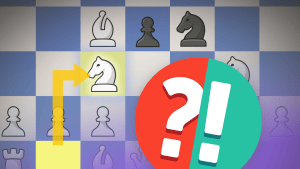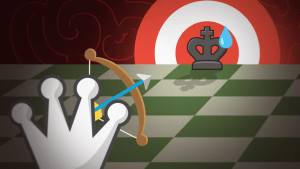
Kasparov's Mysterious Move
The already famous game So vs Kasparov played in the Ultimate Blitz Challenge is both fascinating and puzzling. Not only did GM Wesley So produce a game of unbelievable beauty, he did it against the arguably strongest chess player in the history of our game! Probably the most amazing part of the game is that Wesley managed to play all of his moves in under three minutes! Dubbed the "Immortal Blitz Game," it rightfully takes its place next to the famous games of Adolf Anderssen. Call me biased, but I prefer Wesley's game over the old classics due to the monster he managed to beat!
This game has been analyzed hundreds of times already. I want to talk about just one interesting moment of the game which wasn't addressed by many annotators. The key position happened after 17.Qb3 when GM Garry Kasparov played 17...h6!?
The move looks ridiculous. Black is already way behind in the development, his position is about collapse, and he simply pushes his rook pawn forward one square? What's going on?
Check YouTube and you'll see that many annotators of the game called it a decisive waste of time. I watched this game live and still remember the amazement of GM Yasser Seirawan. I've linked directly to the reaction of the commentators.
GM Maurice Ashley: h6. That's not making any progress.
Seirawan: h6 ... h6 ... But the question is ... I don't try to get into Garry's head ... What was he thinking about with this move, h6? He can't — He can't be thinking about playing f5, opening up the position.
So, what's going on? What was in Garry's head indeed?
I think the solution of this little mystery is pretty simple. Let me start with the basics to explain it. Most experienced chess players know the elementary idea of the sacrifice on the f7-square. We analyzed it more than 7 years ago in this article. This is a typical example.
Of course, it is not only White who can execute this kind of combination. Here is a game from a 14-year-old boy from Riga.

At 14, Tal was only 10 years away from being world champion and setting the world of chess afire for decades. | Photo Wikimedia.
Let's move to more complicated examples of the same idea. For over 150 years, the following game was considered a textbook example of an attack against a fianchettoed bishop.
For almost 150 years, no annotator noticed a combination that would decide the game much earlier. Try to find it yourself.
Do you know who found this combination first? Kasparov and his computer! In his brilliant book, "My Great Predecessors," Kasparov calls the combination typical and mentions "computer play," acknowledging the help of his silicon friend.

Can you believe it? Kasparov made friends with a machine?! | Photo stanford.edu.
I hope now you see why it was so easy for Kasparov to spot and prevent the coming combination even if in a 3-minute game.

